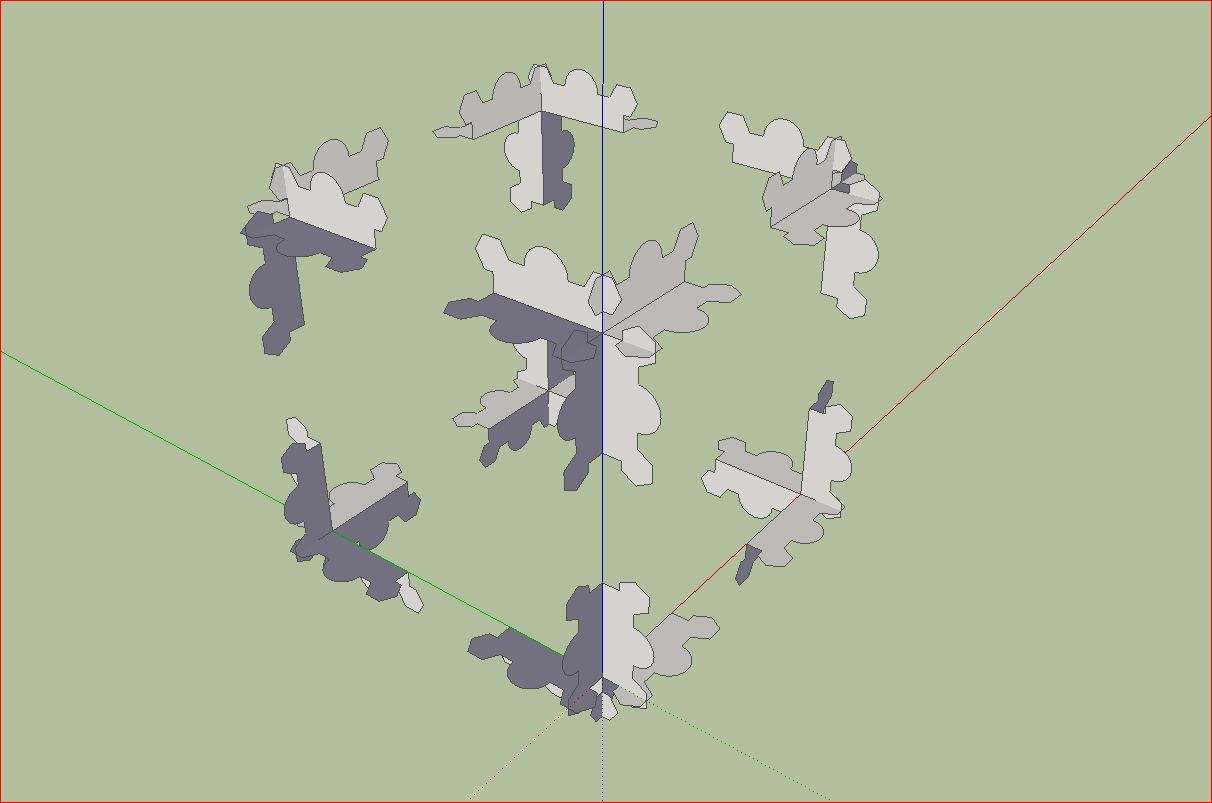[Plugin][$] Curviloft 2.0a - 31 Mar 24 (Loft & Skinning)
-
Hi,
some further simple constructions with Curviloft. The last image show the basi construction.
Charly


Curviloft95 Basic Construction.skp
-
Cool geometric exploration

-
Wow, that's pretty cool.

Who would think that Sketchup could do such a thing with a few click of the mouse.
-
Amazing stuff, Charly

-
Hi,
some new curviloft objects.
Charly
-
Wow, this is really cool.

Could you please show the screenshots of the sketchup geos?
Thank you, Sir.
_KN
-
charly2008
can you make juste one tutorial for yours nice jobs -
Hi Ken, hi Robert,
at first a few screen shots from SketchUp.
-
You have a great imagination, and I assume your knowledge is less limited than many



I notice in the SKup captures that the geometry is coincident but not intersecting. I did not realize that a render app would tolerate this?
By the way, which render app is it?
-




-
Hi mitcorb,
I use Kerkythea. With Kerkythea I have the most experience. I consider myself still a beginner as regards to rendering. I would recommend anyone to begin with Kerkythea and to study the program thoroughly. This is a good basis for understanding other rendering programs.
Charly
-
I usually start trying to construct a basic form. Then you can play with the spline Methods. Then make a group and copy them and connect them several times. Make it a group again and use again rotate copy. It is very easy. The result is mostly interesting geometric objects. Useless but nice to see.
I would be very interested in what ideas others user have. Has someone already used it for architectural purposes?
Charly
-
charly thanks for your nice tuto , but i am interresting for this objet
if you can make tuto too ,
-
Robert,
it is very easy. I used this basic construction shown in my post before. Connect the faces as you want and use spline method "junction by orthogonal Betier curves" as shown below.
Charly

-
charly thanks for your tuto but i havent cuved form , i dont know why??
look this picture
-
thanks charly , i dont have use spline in curviloft , thanks
-
Robert, i think you used a different Spline Method. See images below. The second image shows Junction by Orthogonal Bezier curves.
Charly
-
Probably there are many like me. Some features I can not understand completely.
-
@charly2008 said:
Probably there are many like me. Some features I can not understand completely.
Charly,
There are many ways to do Loft, and this is why there are many options (and there should probably be more).
- The Spline methods on the left side:
- one if simply to link contours by straight lines
- the second is a junction by Bezier curves with mean slope. In many cases where contours are aligned this is almost a straight line too. But in other situations, it gives a curved shape.
-
The two icons in the middle are for Cubic Bezier and Catmull Splines. In most cases they give a very similar shape, though Cubic Bezier is usually nicer in the rounding. Catmull, in contrast, is more similar to what you get in Subdivide & Smooth methods.
-
The two icons on the right side of the Spline method palette: These 2 methods only apply when you have more than 2 contours. The principle is that they link the two extreme contours by B-Spline or F-Spline, using the intermediate ones as a guide for shaping. The generated surface passes through the extreme contours but not thorugh the intermediate ones
-
The vertex matching palette is about how to match vertices from one contour to the next one. I am still experimenting and will try to improve in this area. The matching can be based on:
- match vertex to vertex when there are the same numbers (first default)
- match along the curvilinear distance (second default)
- match along Cubic or Bezier profiles. The principle is that the spacing between matching vertices is function of the curvature of the contour. I found theoritical cases where this is the correct solution, but in the real world, this may be another story.
- The geometry palette is used for 2 purposes currently:
- generate only the junctions as lines (i.e. no surface)
- make the junction as SU curves. This allows deforming the shape in a continuous way by moving the contours.
I plan to add the possibility to construct any part of the mesh (i.e. triangles, quads, junctions only, etc....)
The best is to play with the options on a given model and see what it gives.
I agree that this is not straightforward, but keep in mind that there is unfortunately not a single solution to all lofting situations.
Fredo
PS: by the way, extremely nice models you designed!!

-
Hi Fredo,
thank you for your detailed explanation. I'll continue to experiment with getting to know all the options. Your explanation is certainly helpful to all.
Charly
Advertisement









